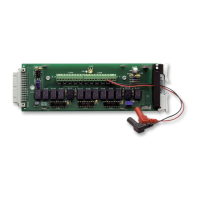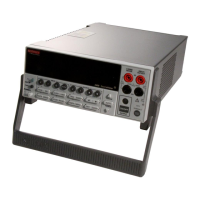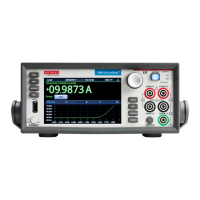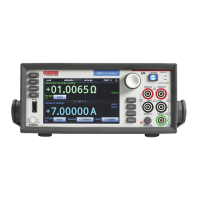Interactive SourceMeter® Instrument Reference Manual Section 3:
2450-901-01 Rev. B/September 2013 3-83
-- Block 17: Go to Block 12
trigger.model.setblock(17, trigger.BLOCK_BRANCH_ALWAYS, 12)
-- Block 18: Set digital I/O lines 1-4; output decimal 2 (binary 0010) to component
handler
trigger.model.setblock(18, trigger.BLOCK_DIGITAL_IO, 2, 15)
-- Block 19: Go to Block 12
trigger.model.setblock(19, trigger.BLOCK_BRANCH_ALWAYS, 12)
-- Block 20: Set digital I/O lines 1-4; output decimal 3 (binary 0011) to component
handler
trigger.model.setblock(20, trigger.BLOCK_DIGITAL_IO, 3, 15)
-- Block 21: Go to Block 12
trigger.model.setblock(21, trigger.BLOCK_BRANCH_ALWAYS, 12)
-- Block 22: Set digital I/O lines 1-4; output decimal 4 (binary 0100) to component
handler
trigger.model.setblock(22, trigger.BLOCK_DIGITAL_IO, 4, 15)
-- Block 23: Go to Block 12
trigger.model.setblock(23, trigger.BLOCK_BRANCH_ALWAYS, 12)
-- After executing all of the above commands the trigger model can be initiated by
executing the command trigger.model.initiate()
Diode grading with immediate binning example
This example shows a trigger model that can be used for diode test grading. Parts are immediately
binned after testing.
In this example, each diode must pass three individual tests to be deemed good. The tests that each
diode must pass are:
• Forward Voltage (VF)
• Reverse Breakdown Voltage (VR)
• Reverse Leakage Current (IR)
A sweep is commonly used to perform these measurements.
Each individual measurement is inspected against a single corresponding limit. This example uses
end binning so that test data can be gathered for all three tests, even if one of the tests fails. The bit
patterns assigned to the limits determine which bin a diode is placed in. It is assumed that the same
digital bit pattern is assigned to both the upper and lower bounds of each limit. Using different "fail" bit
patterns for each test makes it possible to place a failed diode in a specific bin according to its first
detected failure (for example, Bad VF, Bad VR or Bad IR). If the same "fail" bit pattern is used for all
of the tests, then any failure will cause the diode-under-test (DUT) to be placed in a bad part bin.
